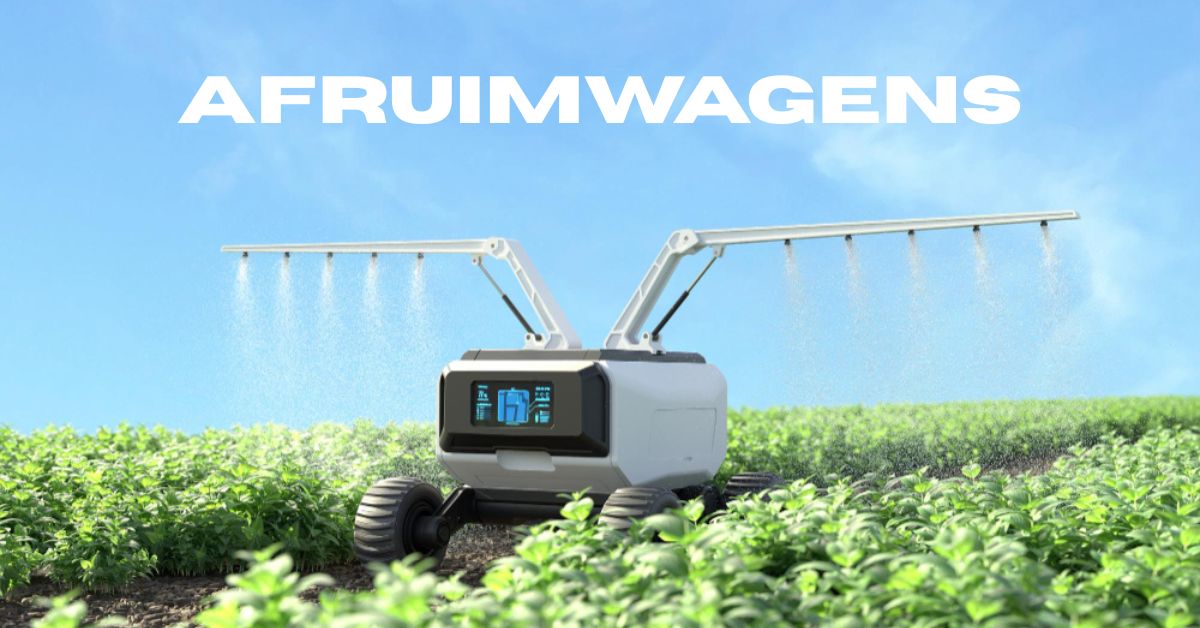General
Afruimwagens: Modern Insights into Practical Applications

Introduction to Afruimwagens
In the world of agriculture, innovation is key to enhancing productivity and sustainability. One such remarkable innovation making waves in farming practices is the afruimwagen. These versatile vehicles have transformed how farmers operate, offering practical solutions for various agricultural needs. As we delve into the fascinating realm of afruimwagens, we’ll explore their history, benefits, and real-world applications that highlight their significance in modern farming. Whether you’re a seasoned farmer or just starting out, understanding these machines can unlock new possibilities for your agricultural endeavors. Let’s dive deeper into this intriguing topic and discover what makes afruimwagens an essential tool in today’s farming landscape.
History and evolution of Afruimwagens
Afruimwagens have roots that trace back several decades, evolving alongside agricultural practices. Initially designed to streamline harvesting processes, these vehicles were simple in function but vital for efficiency.
As technology advanced, so did the design of afruimwagens. They transitioned from basic carts to sophisticated machines equipped with innovative features. This evolution reflected a growing need for speed and productivity on farms.
The introduction of durable materials increased their lifespan and adaptability across various terrains. Farmers began customizing them to suit specific crops and operational requirements.
With precision farming gaining traction, modern afruimwagens integrate GPS and automation technologies. These advancements allow farmers to maximize yields while minimizing labor costs.
Today, they symbolize not just practicality but also a commitment to sustainable agriculture practices that prioritize resource management.
The benefits of using Afruimwagens in agriculture
Afruimwagens offer a transformative approach to modern agriculture. These versatile vehicles enhance efficiency on farms by streamlining the harvesting process.
With their robust design, afruimwagens can navigate various terrains, making them suitable for diverse agricultural settings. This adaptability reduces labor costs and improves productivity significantly.
The ability to transport large volumes of produce in one go minimizes time spent in transit. Farmers gain more hours in the field, allowing for timely planting and harvesting cycles.
Moreover, using it leads to less physical strain on workers compared to manual methods. Enhanced ergonomics safeguard farmer well-being while optimizing output.
These vehicles also foster sustainability by reducing fuel consumption through efficient logistics. By decreasing the carbon footprint associated with farming operations, they contribute positively to environmental stewardship within the agricultural sector.
Case studies of successful applications
One remarkable case study comes from a farm in the Western Cape, where afruimwagens transformed the harvest process. The farmer saw an increase in efficiency by 40% after integrating these vehicles into his operations. They allowed for quicker transportation of produce, reducing spoilage.
In another instance, a cooperative in KwaZulu-Natal utilized afruimwagens to streamline their logistics. By using these versatile tools, they managed to cut down labor costs significantly while enhancing delivery times to local markets.
A vineyard owner introduced them for both planting and harvesting grapes. This dual functionality not only saved time but also improved overall crop quality due to careful handling during transport.
These examples highlight how adopting afruimwagens can lead to innovative solutions that address specific agricultural challenges while boosting productivity across various farming sectors.
How to implement Afruimwagens in your farming practices
Implementing afruimwagens in your farming practices starts with assessing your specific needs. Identify the crops you cultivate and understand how these vehicles can enhance efficiency.
Next, select the right model that fits your farm’s scale. It come in various sizes and configurations, catering to different agricultural demands.
Training is crucial. Educate yourself and your team on operating these machines effectively. Familiarity with their features can maximize productivity while ensuring safety.
Consider integrating technology for monitoring performance. GPS systems or software applications can help track usage, maintenance schedules, and overall effectiveness.
Establish a routine for maintenance checks. Regular upkeep ensures longevity and reliability of your afruimwagens, allowing them to perform optimally throughout the farming season.
Challenges and limitations of using Afruimwagens
While afruimwagens offer numerous advantages, they come with their own set of challenges. One significant hurdle is the initial investment cost. For many farmers, purchasing these machines can be a substantial financial commitment.
Maintenance is another concern. They require regular upkeep to ensure optimal performance. Neglecting maintenance can lead to costly repairs and downtime during critical farming seasons.
Adaptation to different farming conditions presents additional limitations. Not all terrains may be suitable for the use of afruimwagens, leading some farmers to reconsider their practicality.
Training personnel on how to operate these vehicles effectively is essential yet often overlooked. Without proper training, even the best machinery cannot yield desired results in productivity or efficiency.
Future developments and innovations in Afruimwagen technology
As the agricultural landscape evolves, so does the technology behind afruimwagens. New materials are being introduced to enhance durability and efficiency. Innovations in lightweight composites could revolutionize how these vehicles perform.
Automation is another exciting frontier. The integration of AI and machine learning can lead to smarter operations, optimizing load capacities based on real-time data collection.
Additionally, advancements in energy sources like electric or hybrid options are gaining traction. This shift not only reduces environmental impact but also cuts operational costs for farmers.
Moreover, improved ergonomics and user-friendly interfaces will make afruimwagens more accessible to a broader range of users. Enhanced safety features will further ensure that operators can work with peace of mind.
These developments promise a future where it become indispensable tools in sustainable agriculture practices worldwide.
Conclusion
Afruimwagens represent a significant advancement in agricultural practices. Their history reveals a journey of innovation, adapting to the needs of modern farming. As they continue to evolve, these vehicles offer numerous benefits that can transform agricultural productivity.
Farmers who have successfully implemented afruimwagens show how practical applications can lead to increased efficiency and crop yields. However, it’s essential to consider the challenges and limitations associated with their use. Each farm has unique needs which may influence how effectively it integrate into existing operations.
Looking ahead, developments in technology promise exciting possibilities for further enhancing the capabilities of afruimwagens. By staying informed about these innovations and understanding best practices for implementation, farmers can fully leverage this tool.
Embracing afruimwagens might just be the key to unlocking new levels of success in agriculture today and beyond.
